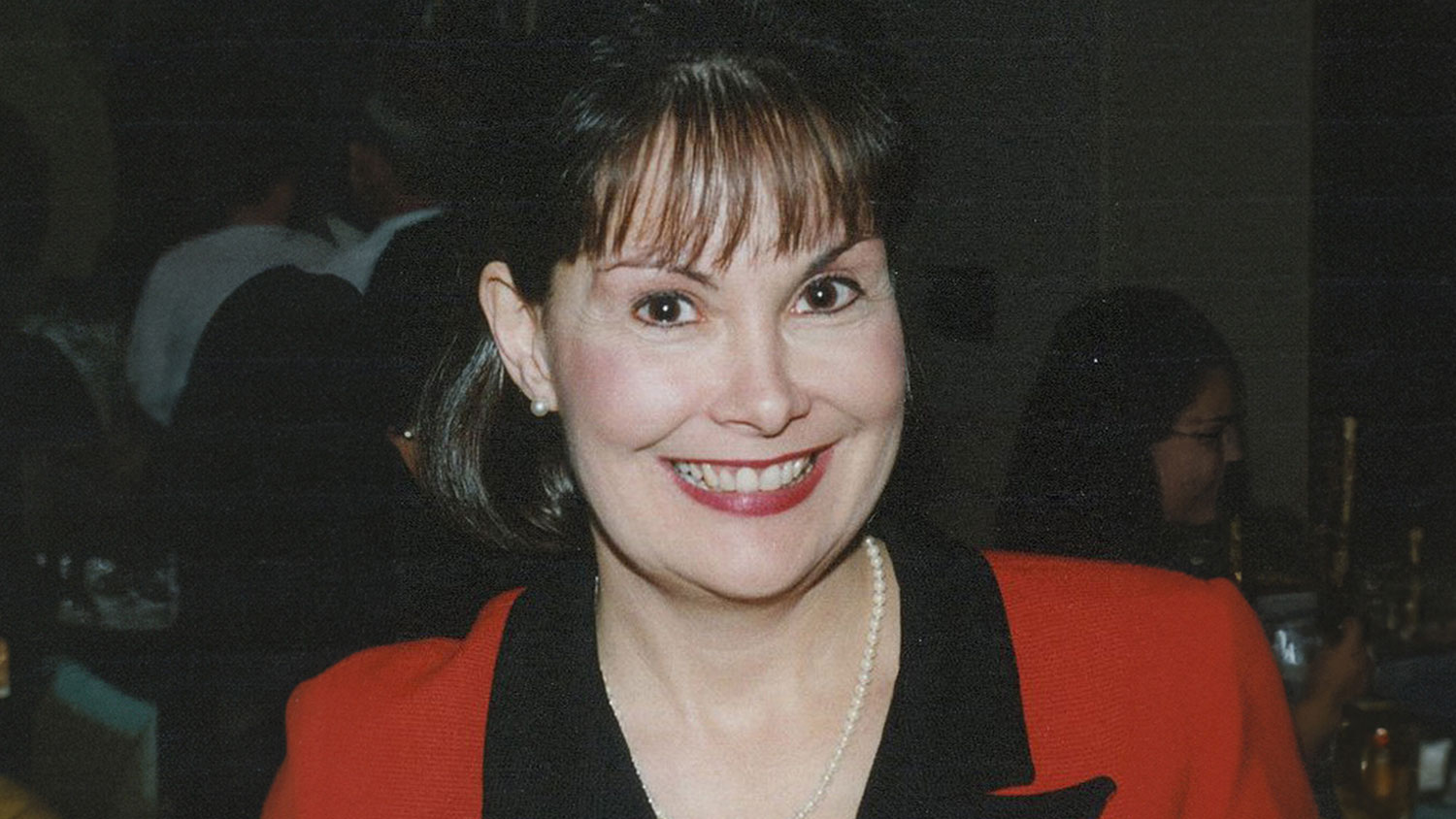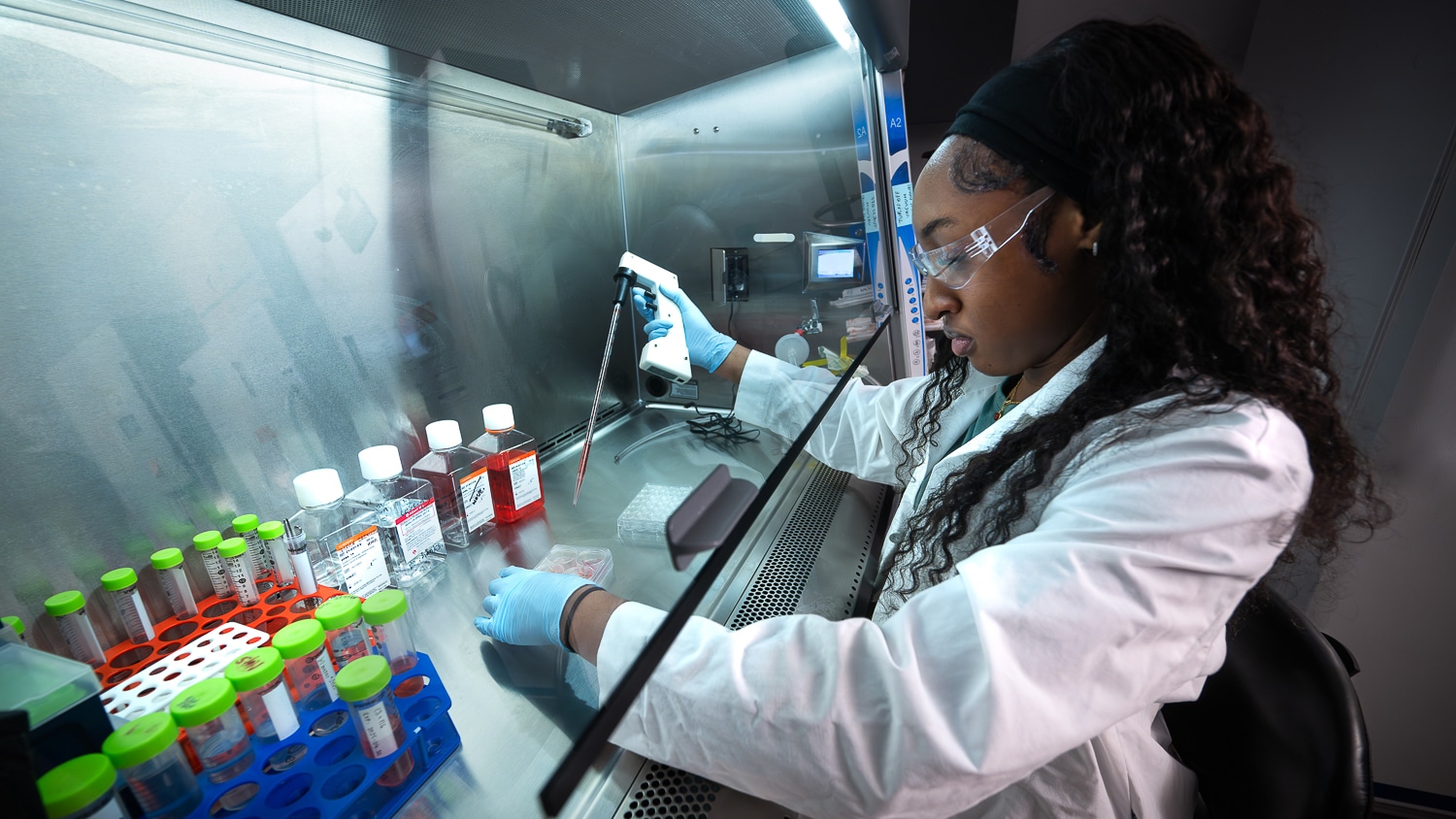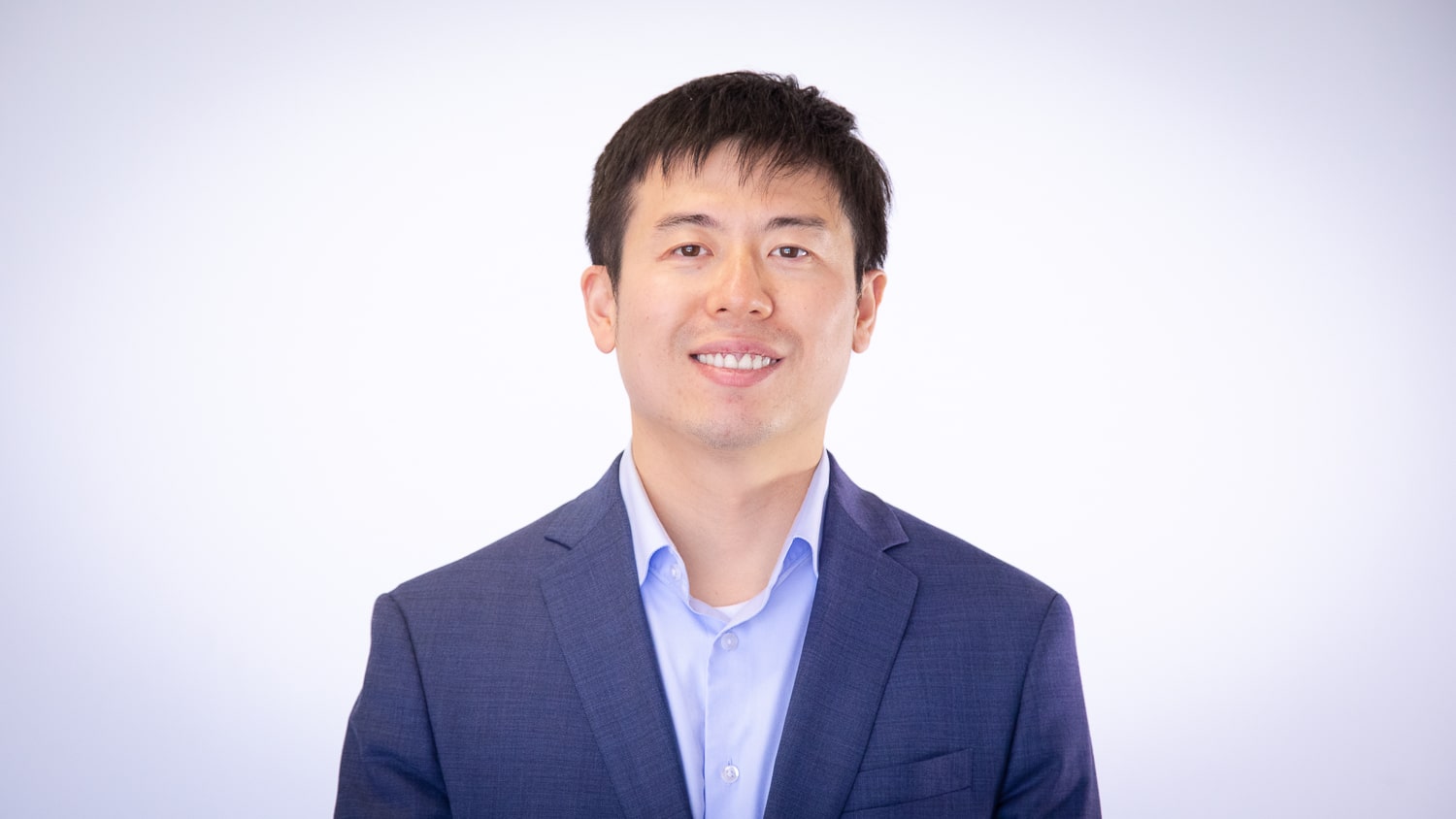Five Questions with Dr. Bryan Ormond

By Cameron Walker
Dr. Bryan Ormond has joined the Wilson College of Textiles as an assistant professor in the area of textile and protective clothing chemistry for the Department of Textile Engineering, Chemistry and Science (TECS). He is a double alumnus, earning his B.S. in Polymer and Color Chemistry in 2007 and his Ph.D. in Fiber and Polymer Science in 2012, and he has been a research assistant professor in the Textile Protection and Comfort Center (TPACC) since 2013.
“Growing up, my dad was a minister, so the only thing I knew was I didn’t want to do that — because I was terrified to speak to a crowd of people,” said Ormond, who now frequently speaks to crowds of people through his work as a researcher and professor. “I went through a phase where I wanted to be a paleontologist, but then I settled on chemistry when I was in high school.”
“One of the best parts of teaching and mentoring is being able to see potential in a student that they don’t even know is there, and after a few years of encouragement and pushing them to reach beyond what they believe are their limits, you get to see them achieve what they never thought was possible.”
He is one of the world’s leading experts on the Man-In-Simulant Test (MIST), used to evaluate the performance of first responder protective garments against chemical and biological agents. In 2016, he developed new MIST performance criteria for the National Fire Protection Association (NFPA); now, all chemical protective ensembles in the U.S. that carry an NFPA certification are subject to the requirements he developed. These standards ensure that a firefighter’s gear is as safe as possible, allowing them to do their job in comfort while keeping out carcinogens and other toxins.
“If we want to make as big of an impact as possible, we have to change the standards,” he said.
Ormond serves on the National Fire Protection Association (NFPA) Hazardous Materials Protective Clothing and Equipment committee and is the current chair of standards and testing organization ASTM International’s Chemical Hazards subcommittee. He was awarded the NC State University 2017-2018 Outstanding Extension Service Award and was inducted in to the Academy of Outstanding Faculty Engaged in Extension. He has published in several leading journals, holds two patents and has secured over $3.5 million in government and industry funding.
You’re doing important work to protect first responders. What drew you to this research — and what keeps you interested?
It was really a case of being in the right place at the right time. I was graduating from the college and didn’t really know what I wanted to do next, and then I was offered a graduate assistantship in TPACC with Dr. Roger Barker (TPACC director and TECS professor). It wasn’t until I started doing my research and began to see the immediate impacts that my work could have on first responders that I fell in love with the field. I tell my graduate students all the time that their work won’t just sit on a shelf in the lab or just be a publication in a journal. Whether we are changing the standards that all firefighter gear is certified to or making a new turnout ensemble, our research is found on the backs of firefighters across this country. That, in itself, is incredibly rewarding and motivating.
The part that keeps me interested has changed over time. One of the biggest challenges that we are working on now is how to mitigate the exposures that firefighters have to carcinogenic compounds on the fire ground because firefighters are experiencing elevate rates of many types of cancers compared to the general population. Cancer is tough, and it doesn’t discriminate. Most likely everyone will be affected by it in one way or another, and I am no exception to that. My grandfather beat multiple myeloma, and a little over a year ago, I found out that my mom was diagnosed with a type of leukemia. Luckily, she is doing well, and everything is under control now. I know that my expertise isn’t going to be in finding a cure for her cancer, but what I can do is develop better protective gear for firefighters so that hopefully more families don’t have to hear that diagnosis.
What makes TPACC and the Wilson College of Textiles the best place to conduct your research?
The Wilson College of Textiles isn’t just the best place for me to conduct my research — it’s the only place. For developing and evaluating protective clothing, the TPACC facilities are unmatched across the world. There are a lot of labs that have a few of the pieces of equipment, but none that have everything under one roof like here in the Wilson College of Textiles. We tell clients all the time that we strive to be a “one-stop shop” for everything that they need — from thermal protection and comfort to chemical analyses and ensemble design. For me specifically, the MIST chamber that we use to evaluate HazMat protective clothing is the only one of its kind at an academic institution in the U.S. That access to research the test method has helped me to become one of the experts in the field of evaluating chemical protective clothing.
What does it mean to you to teach at your alma mater?
I’m not quite sure I can put that one into words, but I’ll try. This university and college have meant so much to me and my family over the past 15 years. I am the first in my family to graduate from a four-year institution, so this place has changed my life. I met my wife (Sasha, B.S. in PCC and Chemistry ‘07 and Ph.D. in Fiber and Polymer Science ‘12, currently an assistant professor of Chemistry and director of Dual Degree Engineering at Meredith College) here; we were in the same orientation group our first days on campus. We got married around the fountain at the Wilson College of Textiles and our reception was in the Atrium. So, to say that the college means a lot to me is an understatement. My life story is literally woven through the halls of these buildings (pun intended).

I feel so incredibly blessed to have been given the opportunity to teach in this college. With everything that I have gained from the faculty and staff here, I’ve always felt an obligation to give back even more. After being an undergrad, a grad student, a post-doc, a research assistant professor and now an assistant professor, it’s pretty safe to say that I have seen just about everything this college has to offer from both sides of the classroom. I feel like I’ve been training for over a decade to not just teach any classes or any students, I’ve been preparing for these classes and this special group of students on this campus.
It is a little surreal teaching the classes that I sat in not too long ago, but it also helps me connect with the students. I know where they are at because I’ve been there. In one of the freshman labs, they make an orange dye and use it to color a piece of fabric. I still have my orange fabric that I made my freshman year. I love being able to make those connections with the students during their first few semesters and then watch them grow and mature into seniors and even graduate students. One of the best parts of teaching and mentoring is being able to see potential in a student that they don’t even know is there, and after a few years of encouragement and pushing them to reach beyond what they believe are their limits, you get to see them achieve what they never thought was possible. It is incredibly rewarding, and I am so thankful that I get to do what I love at a place that is my home.
What achievement in life are you most proud of (in or outside the lab or classroom)?
I’d be lying if I didn’t say my proudest moment was when I looked into my daughter’s eyes for the first time. That was a life-changing experience and one that I will never forget. However, the achievement that I am most proud of in my career is getting to the position that I am in now. My journey from undergraduate to assistant professor has been a long road with a lot of successes and even more failures. There were many times that I wanted to give up and just move on because I felt like I wasn’t going anywhere or wasn’t good enough for the job, but my parents taught me to never give up and to keep pushing forward. I’m so glad that I did keep pushing forward because the journey is what has made this end result that much more meaningful.
What do you do when you’re not at the Wilson College of Textiles? What are some favorite books/movies/shows/podcasts/etc.?
Since my daughter was born last year, I try to spend as much of my time outside of the college with her and my wife. Other than that, I’ve been working on my DIY skills and trying to remodel parts of my house. I’m a sucker for any show or movie that Marvel puts out, and I can’t seem to stop watching reality shows like Survivor, Big Brother, Amazing Race and the Food Network. I’m also an avid Wolfpack football and basketball fan and enjoy participating in the yearly TPACC fantasy football league with our graduate students and staff.
Pictured in main photo: Dr. Bryan Ormond and Textile Engineering graduate research assistant Adhiraj Shinde
- Categories:


